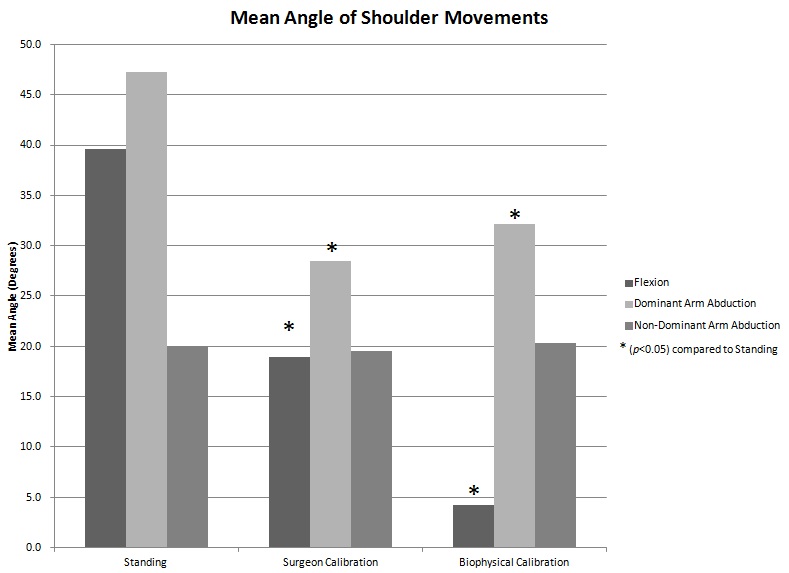Charles B Becker, BS, MEM, J Scott Roth, MD. University of Kentucky College of Medicine.
Introduction. Traditionally, the operating room environment requires the surgeon to stand adjacent to an operating room table. Although this interface was suitable for open operations, the dynamics of laparoscopic surgery may require alternative solutions. Surgical platforms are apparatuses designed to position a laparoscopic surgeon above a patient while relieving pressure from the surgeon’s lower back, knees, and feet. The ETHOS surgical platform adjusts vertically, horizontally, and allows for angulation of the surgeons torso resulting in a forward leaning posture. This study evaluates the ergonomics of a surgical platform compared to a traditional surgical stance in performing laparoscopic suturing.
Methods. A prospective, IRB-approved study was performed evaluating the impact of a surgical platform upon surgical accuracy, task completion time, and body mechanics. Board certified surgeons performed laparoscopic suturing in a simulated environment under three scenarios: 1. Standing adjacent to the laparoscopic simulator, 2. Seated in the Ethos surgical platform calibrated manually by the surgeon, and 3. Seated in the Ethos surgical platform following calibration based upon measured biophysical data (forearm, arm, back, thigh, and leg lengths), surgical site, and port location. Video recordings from behind and lateral to the surgeon were obtained and were analyzed for shoulder flexion, extension, and abduction. Accuracy of suture placement and time to completion of the skills were also measured.
Results. Using the surgical platform in both the self-calibrated and biophysical-calibrated modes, the surgeons were found to have both a reduced mean angle of flexion (19.0° and 4.2°, respectively, p<0.05) and a reduced mean angle of abduction of the dominant arm (28.4° and 32.1°, respectively, p<0.05) compared to the traditional standing position (39.6° in flexion, and 47.3° in dominant arm abduction). In addition, the standard deviation of observed angles of flexion (9.8°, p<0.05) was reduced with biophysical calibration compared to the standing position (16.9°), indicative of a minimization the number and degree of movements made during the laparoscopic exercises. Also, data was trending to demonstrate the biophysical calibration led to a further reduction of flexion angle and standard deviation of flexion angle from the surgeon-calibrated platform. Neither suturing time nor accuracy was demonstrated to be affected.
Conclusion. In addition to reducing strain on a surgeon’s lower back and legs during lengthy procedures, surgical platforms allow a surgeon to reduce the amount of shoulder torque required to maintain arm position in flexion and abduction, while also reducing the degree of arm motion in the flexion/extension plane. In the long term, this reduction of motion and strain would reduce aches and pains felt by the surgeon, and has the potential to lengthen the careers of surgeons.
